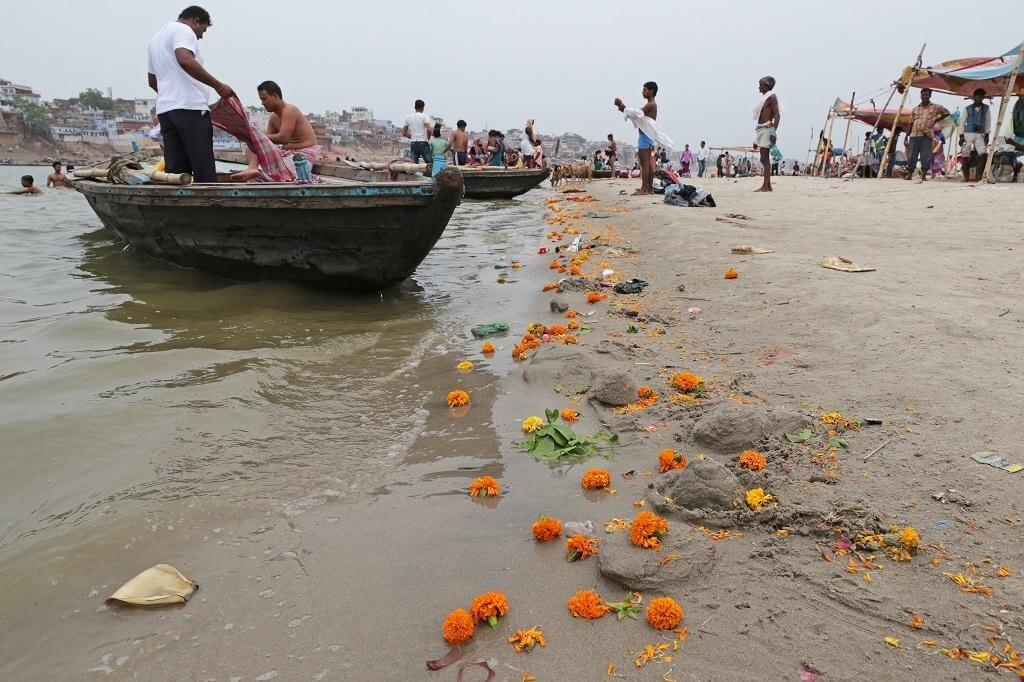Over 800 million tonnes of flowers are offered to Gods at temples, mosques and gurudwaras across our country. With flowers, come offerings like vermilion packets, plastic incense packets, and bangles made of synthetic material. The number of temple waste is on the rise and is adding to the total garbage/waste produced by India every year. At some religious sites like Haridwar ‘Har ki Pauri’ where people incessantly put flowers and other offerings with it into the Ganga River basin, without even considering the negative impacts it may have on the environment.
Temple offerings are considered sacred and are highly discouraged to be thrown away as garbage; all the waste that is produced/collected at temples is without being segregated into bio-degradable and non-biodegradable wastes are dumped directly into landfills which cause further damage.
Here is the problem that is staring right at our face- Segregation! If we have to fight the problem of waste management at any waste generation site, especially at temples, mosques, or gurudwaras that have sentimental values attached to it, there we have to take measures to segregate the waste at the source. There are organizations like Clean India Ventures which are taking important steps to reduce waste by introducing advanced technologies at the source. Clean India has launched a range of waste recycling machines called Green Waste Reprocessor, designed for Temple Waste, Horticulture Waste, Food Waste, and Organic Mixed Waste Model.
Green Waste Reprocessor also simply known as GWR is an automatic mechanized organic waste converter that converts all kinds of Temple Waste into valuable Organic Manure or Havan Samgri. The holy refuse needs to be segregated before it is put into the machine, and here is what you should do to segregate the waste:
1. Identify the kinds of Waste: There are different kinds of offerings that followers worship on the deity such as flowers, fruits, leaves, clothes, kumkum, etc. Some of the materials are offered directly, whereas some are packed in cellophane paper (thin plastic sheet), woven in a thread (garland), and more.
2. Segregate into Biodegradable and Non-biodegradable & Re-usable or not: Once the wastes are identified, it needs to be segregated into usable and non-reusable categories. Like fruits and clothes can be distributed among beggars who live around the temple, whereas milk that is poured onto the idol is a waste and not reusable will go into the biodegradable category. Other offerings like flowers, leaves, and more are collected together which will get further processed into the machine as they are biodegradable.
3. Put into Temple Waste GWR Model: Once the offerings are segregated, biodegradable waste is put into the Green Waste Reprocessor machine at the temple which will further convert holy refuse into organic manure.
4. Use Organic Manure: The organic manure produced from the machines are used at farms or temples that have garden areas or it can be sold, as the manure is a rich source of nutrients and also a preferred choice as it is made out of offerings worshiped on God and so become God’s Prasad.
While the green waste reprocessor is designed for various purposes, segregating waste is important as it will make clean, pure, and cheap organic manure that has high benefits and zero negative impacts on the environment.
Clean India Ventures have recently, at Baidyanath Dham, installed its Flower waste recycling machine which will process all types of Temple waste including flowers, and all other leaves in the temple to process it into compost. They installed 2 machines of 1 Ton/per day capacity for processing the organic waste at the source.
The machine has helped Baidyanath Temple to dispose-off the waste into compost which is being sold to farmers and local citizens at a good rate.
